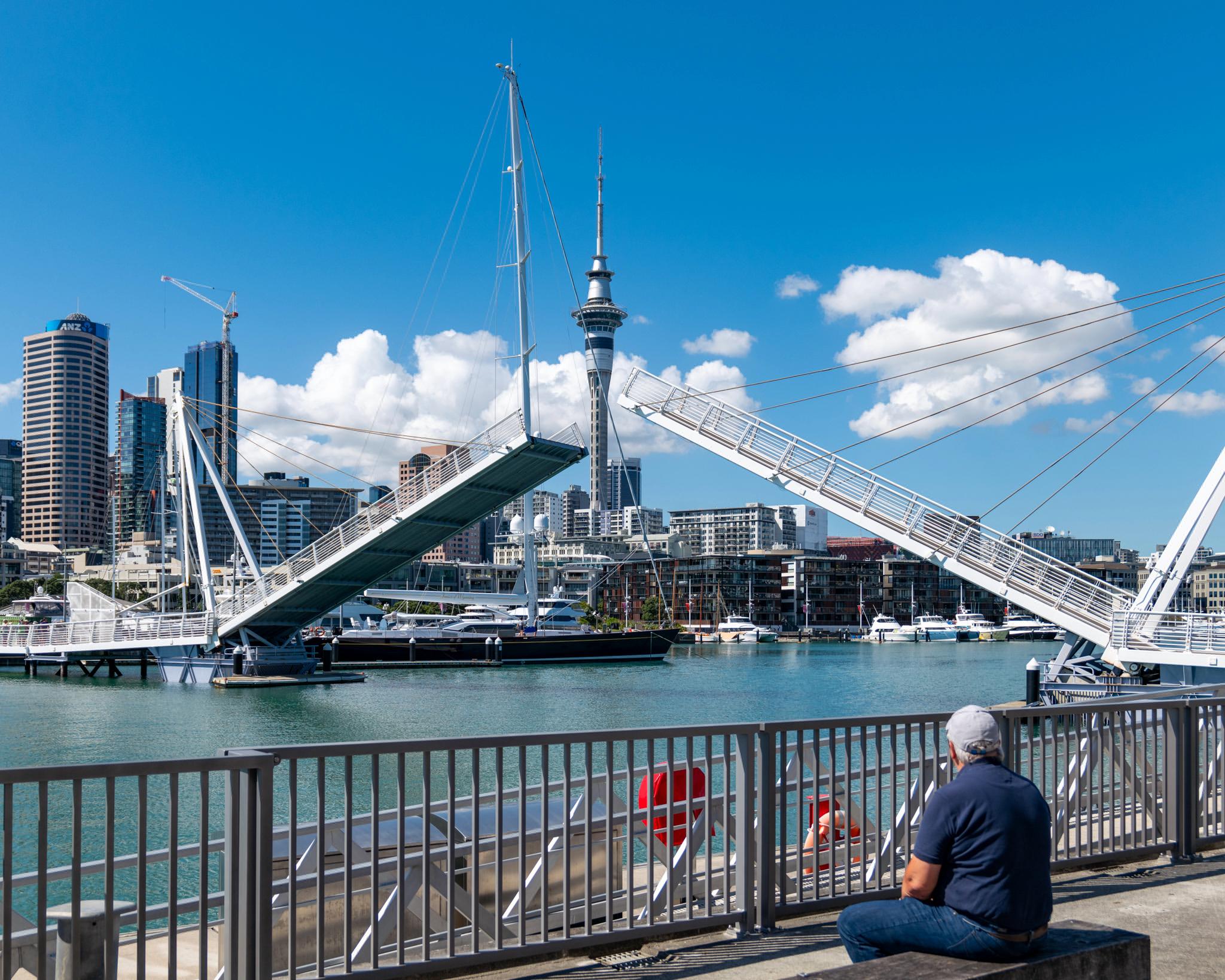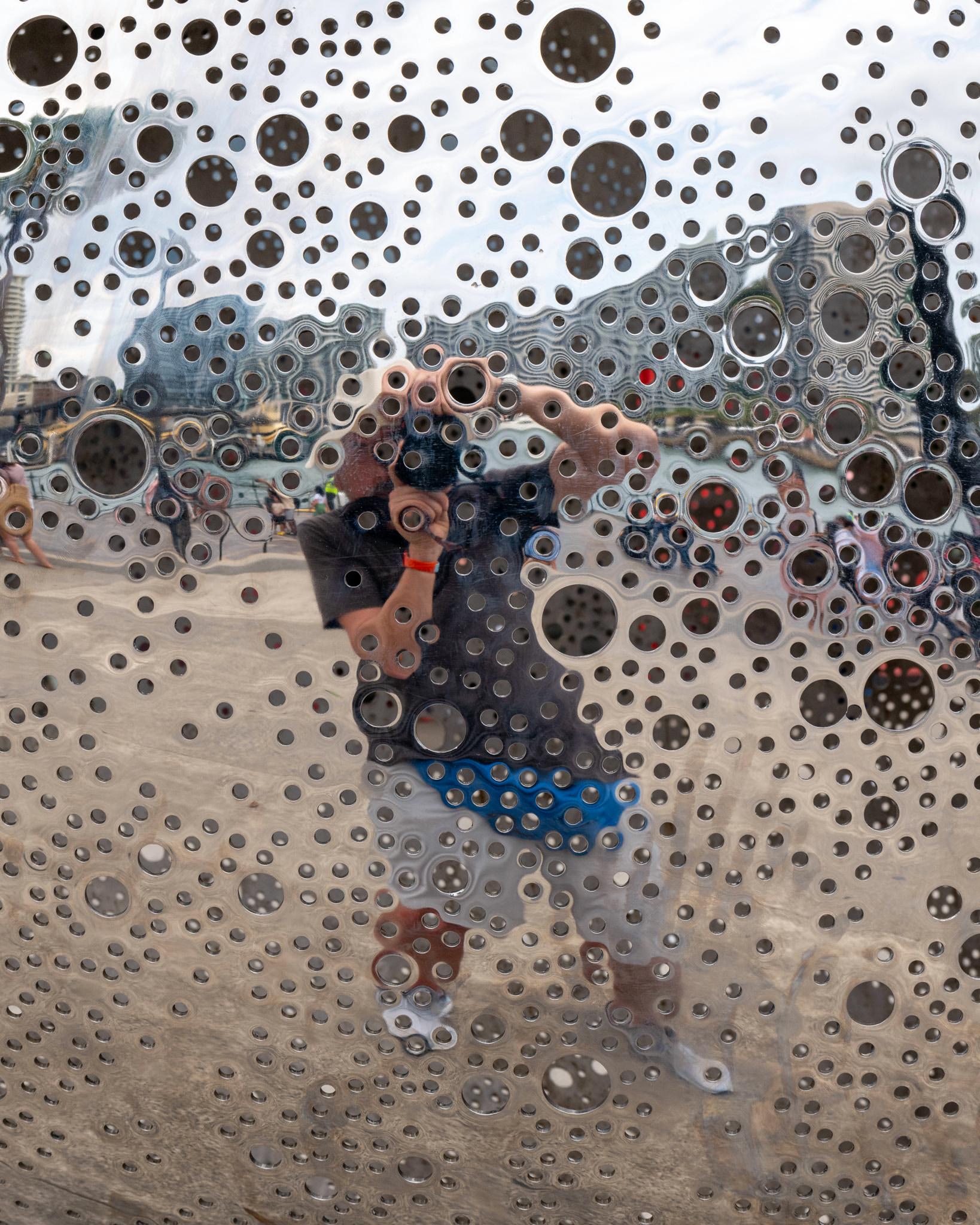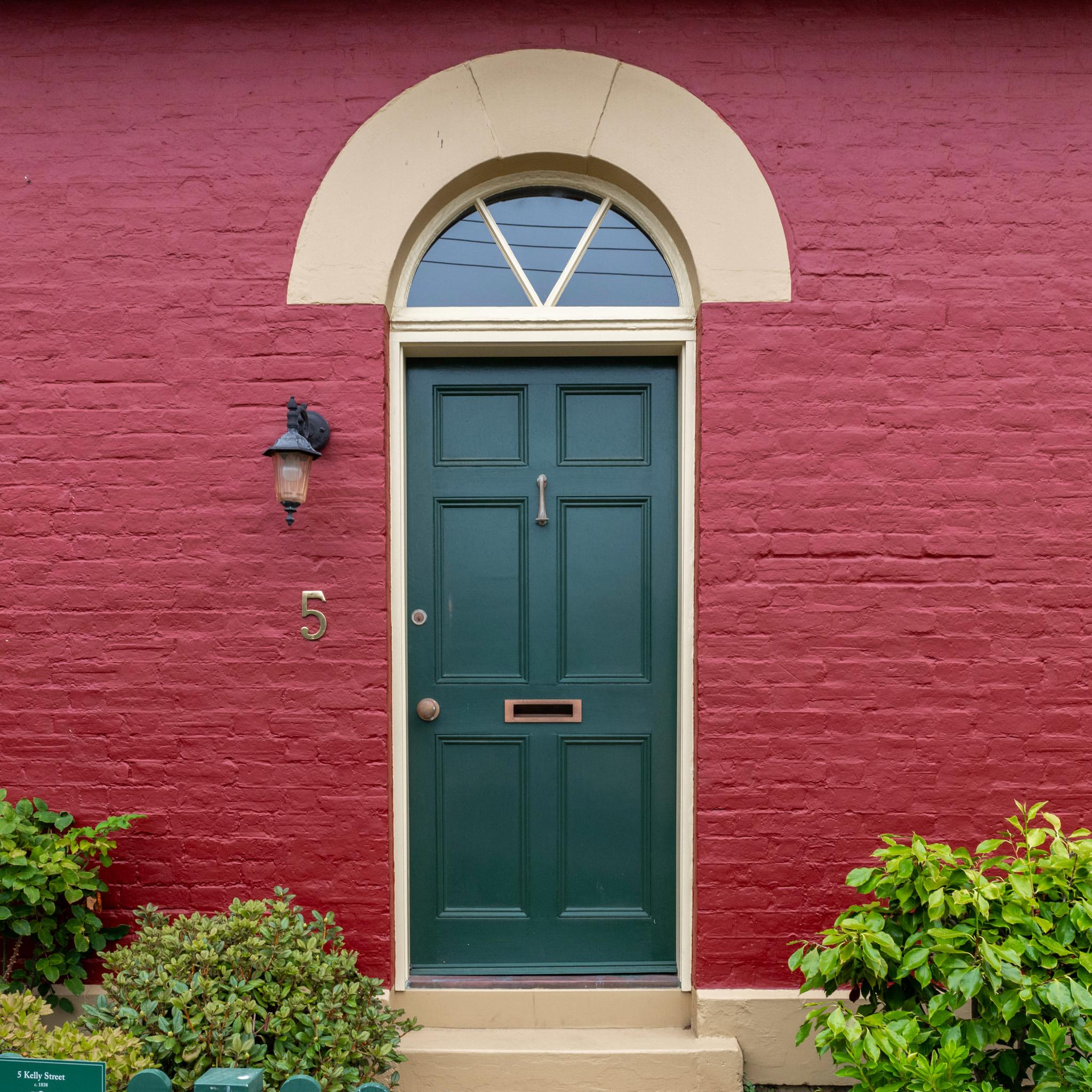Along with sharpness, arguably the most important considerations in buying a new lens are speed, weight, and cost. A really fast lens might offer prestige and the prospect of outstanding subject separation. But, it usually comes with a hefty price tag and at a hefty weight. And when travelling, where a kit is carried for many hours, do we really lose out prioritising weight over speed? It seems some manufacturers are voting with their apertures. Take the Panasonic Lumix 20-60mm f/3.5-5.6 for example.
‘The heaviest of burdens crushes us, we sink beneath it, it pins us to the ground’. So says Milan Kundera in The Unbearable Lightness of Being. I wonder if he was a travel photographer?
A weighty argument
Many of us hold the view that the weight of our photographic kit is an important consideration. This is especially so when travelling with our gear. It’s one thing to drive to a location and walk around for twenty minutes, taking a few photographs. It’s quite another to fly halfway around the world and then spend many hours on multiple photographic walkabouts.
I usually travel with a Leica Q2, an outstanding option for a portable one-camera-one-lens-full-frame kit. But for a recent four-week trip to Australia and New Zealand, it seemed prudent to consider a more expansive system. For example, a slightly shorter focal length for architecture and landscapes, and a slightly longer focal length for wildlife.
I eventually decided to take the humble Panasonic Lumix 20-60mm f/3.5-5.6, mounted on a Leica SL2. What was I thinking?
The Panasonic Lumix 20-60mm – a lens for all seasons
First, the lightweight Panasonic would offset the heavyweight SL2. The lens weighs just 350g. Compare that to the 906g weight of my Leica 24-70mm f/2.8 zoom, another option I considered. Second, that slightly wider field of view could be very useful for photographing interiors, e.g., of Hobbit holes. Finally, the SL2’s 47 megapixel sensor would easily allow 50%, or even 33%, crops on images taken at 60mm. This would yield 120mm or 180mm effective focal lengths for more distant subjects.
What about the lens’s slow minimum aperture, though, which is f/3.5 at 20mm and f/5.6 at 60mm? Well, in bright conditions shooting at f/8 (don’t forget it would be summer Down Under) this would be irrelevant. And in low light, at high ISO, I was confident that Lightroom’s AI-denoise feature would come to my rescue.
And that lack of subject separation? It might be sacrilege to some, but in the right situation, the new Lens Blur feature in Lightroom works a treat. More on that in a future article.
Although I took the Q2 as well, both as a back-up option, and for evening strolls, I used the SL2 and Panasonic Lumix 20-60mm kit throughout my trip. It worked out superbly: I shot almost a thousand images. And it proved quite comfortable to carry, even for hours.
The need for speed?
I have more to say about this lens, with which all the images in this article were shot. But I would first highlight it as a prototypical example of a manufacturer offering photographers an intriguing option. That is, a high-quality lens in which low weight has been prioritised over speed.
That manufacturer, Panasonic, has just released an even more remarkable lens of this type. The Lumix 28-200mm f/4-7.1 zoom weighs in at just 413g! Coupled with a Leica SL2, exploiting the L-Mount ecosystem, this would represent an extremely versatile kit. Its in-lens stabilization, coupled with a compatible camera’s in-body-image-stabilization, would yield a >6-stop exposure benefit. Hand-held shots therefore become a breeze, and modest digital zooming easily yields >400mm equivalent focal lengths.
But what about those slow minimum apertures? As outlined above, shooting in daylight at f/8 renders that inconsequential. And in low light? There will inevitably be limits to what’s possible, but if you have not yet tried that AI-denoise feature, it’s remarkable.
Speeding can be costly
I have not dwelled on the cost of these types of lenses, but it appears that foregoing the need for speed is helpful here too. You can buy a used Lumix 20-60mm zoom for around $300, or a brand-new one for $600. And if you buy it as a kit lens with, say, a Lumix S5 II, it can be even cheaper. Overall, it represents incredible value. Furthermore, the Lumix 28-200mm zoom will apparently cost $899 new — another keen price.
Most Leica lenses cost large multiples of these prices.
However, not so long ago, they too offered lighter, more affordable lenses at the expense of speed. I have a 75mm Summarit f/2.4 which is small, light, and optically superb. The corresponding 75mm Noctilux f/1.25 costs over $14,000 and weighs over 1kg. Sadly, as we know, the Summarit line was discontinued.
Here’s hoping more manufacturers adopt or return to a ‘much lighter and a bit slower’ philosophy in their future lens offerings.
Back to the Panasonic Lumix 20-60mm f/3.5-5.6
It really is a gem, and delivered beautiful images in a multitude of situations. At the wide end of its range, it provided expansive vistas, in the country, the city, the beach, and at sea.





It also proved extremely useful for photographing enclosed spaces and the interiors of larger buildings.





As I described in a recent article, even street photography was easily within its wide-angle capabilities.



At the long end of its range, I was able to capture images of birds, animals, and distant landscapes.





At the risk of upsetting die-hard Leica fans, you could even describe it as a modern-day Tri-Elmar MATE for the L-Mount world. The compact Tri-Elmar M-lens offered three distinct focal lengths of 28, 35, and 50mm at f/4 (slow for an M-Mount lens). The Lumix offers an even wider focal length range, its 20mm option in particular being both unusual and extremely handy.
In fact, its focal length range makes it unique within the increasingly large L-Mount ecosystem. There is also nothing comparable from any other manufacturer. For a zoom lens, it probably represents the best combination of size, weight, flexibility, and performance available today.
If you really need more speed
Still hung up by that f/3.5-5.6 variable aperture? Then, pairing it with an equally lightweight Lumix 50mm f/1.8 (300g) might be an option for you. This lens is similar in optical performance to the “budget” Leica 50mm f/2.
If you would like to read a more objective, professional review of the optical performance of the Lumix 20-60mm, here’s a review from PCMag. At its launch in 2020, they rated it as Excellent, and an Editor’s Choice.
The editorial team at Macfilos are all big fans of this little lens: Mike, Jörg-Peter, and I have all used it out in the field. And here’s a view from Don Morley, life-long Leica enthusiast, professional photo journalist of repute, and outstanding photographer:
“I love my Panasonic 20-60mm zoom. For me, it is a masterpiece of common-sense design: light-weight and yet superb performance. It is good for 95% of whatever I want to do, and is the one thing which makes my hefty SL worth carrying or keeping.”
So, if you want to ‘reduce the heaviest of burdens before it crushes you’, you might want to check it out.
Read more from the author
Want to contribute an article to Macfilos? It’s easy. Just click the “Write for Us” button. We’ll help with the writing and guide you through the process.












Enjoyed your post! For travel photos I find that an f4 aperture is not limiting – how often does one stop down anyway to get near-far sharpness? I’m an M-shooter using the Tri-Elmar MATE for travel, I love it except for its protrusion into the VF at 28mm. If Leica or Panasonic came out with a compact full-frame L-mount body I would buy into both. The SL/S5 bodies are just too big.
Thanks, Rick! I have an M240, with 21mm, 35mm, and 75mm lenses, so as cool as the Tri-Elmar MATE sounds, I don’t think I can justify buying one. The Voigtländer 21mm is the slowest of these three lenses, at f/3.5, but it has never been a limitation. It’s a really outstanding lens for the money. All the best, Keith
I have used both the 21mm f3.5 Color Skopar and the f4.5 Biogon-C and find that they are sharp wide open such that the f2.8 lenses need to be similarly stopped down to get similar quality. Their compact size makes the difference – pocketable and affordable.
A great option if saving weight and cost are your only priority however, the first thing I noticed in PC Mag’s review was this: “Edges aren’t that sharp at 20mm.” The thing I like about Leica’s much heavier lenses is they don’t compromise on consistent optical performance. I think I’ll stick with my 24-70 Leica SL lens and use M lenses when I want to go smaller and lighter. Having said that you have got some fantastic results with your do it all 20-60. Well done! I don’t think we need to worry about slower apertures in zooms so much since digital cameras have great high ISO performance these days. A point in favor of the Panasonic. How is the close focus / image magnification ratio on the 20-60? If you are happy with cropping I guess it wouldn’t be an issue. Cropping seems to be the new zooming!
Hi Stephen, many thanks! Apparently, the lens can focus as close as 5.9 inches, delivering a magnification ratio of 1:2.3. I have never used it in this way, but that seems pretty decent. As mentioned in the article, mounting the lens on an SL2 body provides a lot of digital zooming capability, which I use regularly. So, it is easy to push it to give effective focal lengths well beyond its 60mm maximum. Cheers! Keith
Wow, that’s an impressive magnification ratio indeed. If the sharpness can be maintained in the center of the image at that distance from the object it is certainly worth looking at.
Leica SL lenses can only get a magnification ratio of of about 1:3 or 2.9 ( 24-70 zoom ) which is already pretty decent. You’ve got me interested, will investigate.
Great article, thank you.
I use both the 14-28mm and 20-60mm panasonic lenses on my SL, CL, S1, S1R AND T.
As a general purpose walk around lens the 20-60 is the perfect range and the evenness across the frame amazes me, more so than any Leica 21mm lens I have ever used. Sure at night I’ll use my Sigma 20mm F1.4 which is frankly astonishing, and a wonder in the dark with the S1’s high iso ability and IBIS.
I still use heavy gear when it’s appropriate, i.e. my D3s and 70-200 for sports, D500 and 200-500 for wildlife and surfing, but when I go for a stroll or even a travelling, the two lightweight Panasonic lenses are all I take, although sometimes I add the 24-105 Panny, which is heavier but also dead handy.
So, I use quality small aperture lenses in daylight and more specialised gear when needed. I certainly agree with every word Don Morley said and frankly his opinion counts far more than the Youtubers that haven’t started shaving yet…
All the best, Mark
24-105 is a perfect range for an all round walkabout lens! I would find the 60mm focal length just a tiny bit limiting. After a walkabout and looking at the results I notice that I seem to be at the 70mm setting quite a lot on my Leica 24-70.
Hi Mark, many thanks! I only own one other Panasonic lens – a 85mm f/1.8 – which is also both lightweight and an excellent performer. I typically turn to it for indoor concerts, where that slightly longer reach and faster maximum aperture comes in very handy. I will be volunteering at a local festival soon, and can see myself using that lens extensively, as well as the much heavier Leica 50mm f/2 APO SL, which is outstanding. All the best, Keith
Keith, well done!
I fully agree with your approach. I have sold most of my Leica lense and now I am a happy user of Voigtländer and Panasonic lenses. I kept only my Vario-Elmarit 24-90, which I think is still a outstanding lens. I like the drawing of it a lot. Thank you for your comprehensive work.
Josef
Hi Jose, many thanks! You are welcome. Of all the heavyweight Leica zoom lenses out there, the Vario-Elmarit 24-90mm appears to have a huge fan following. I won’t be buying one, but I can understand why photographers who have one are reluctant to part with it. All the best, Keith
Excellent article, Keith.
Back in the heyday of film, which was the 1990s (for me), I always opted for greater range and compactness, when choosing zooms for my Nikons. Weight was not usually a factor, since there weren’t that many fast zooms in MF. Back then variable aperture was a price one had to pay to get affordable zooms that performed well optically.
When I finally bought a Df (2021), I first tried some fast fixed-aperture AF lenses, both zooms and primes. But I soon decided the size and weight were just not worth it. After all, today’s sensors are oh so much better in low light than film was.
Hi Martin, thanks so much! Photography magazines and reviews seem to regard variable aperture zooms as inferior to their fixed aperture counterparts. But in practice, for many projects, is that variable aperture really an issue? If it meant a significantly lighter and smaller lens with comparable performance, I, for one, would go for the variable option! All the best, Keith
Thanks Keith,
I would have thought every lens team would have to weigh (unintentional pun) numerous factors to balance what potential buyers value most. In a sense these decisions are not either or, but a series of sliding scales that aim to find a balance between factors that buyers believe give them what they are prepared to pay for.
In addition the increasing presence of denoise programs and IBIS/OIS may shift that balance further as lenses do not have to be super fast. Inevitably that must change the equation in favor of lighter and smaller, if slower aperture, lenses. It may also mean that lenses can be fitted with slower and lighter motors as depth of field increases and weight of the lens elements decreases.
And that goes back to the Colin Chapman dictum of “Just add lightness”…
Leica, meanwhile, takes an uncompromising approach to its lenses (I’m thinking here about the SL lenses) where every quality takes precedence over weight. Some of those lenses are monsters. And I can never decide whether that extra weight (and, cost) is actually justified in results. Is a $6,000 lens worth it in comparison with a $1,000 Sigma or a $2,000 Panasonic. Would we see the difference, or would we have to be content with the warm feeling that comes from having the best?
There is also the grey area of lenses that are manufactured by third parties (and sold at a reasonable price) but also marketed by Leica (and sold at a premium). How do we value the more robust build and different materials? Is the Leica version worth it? Take the 24-70 zoom, which is generally thought to be a Sigma, compared with the Leica 24-90 which ought to be so much better based on cost and weight. But is it? Many friends have sold the 24-90 in favour of the 24-70 because it is much lighter and easier to carry around. And they maintain that the results are similar.
Perhaps Colin Chapman had the right idea…
I went with the 24-70 SL because of cost and weight. I thought I could upgrade to the 24-90 if the ‘cheaper’ zoom didn’t meet my expectations, but it has and it does. It’s got the combination of excellent optical quality and the Leica build quality which I personally value. I haven’t had a chance to use Leica’s 24-90 but I’m sure it will be optically superior (in certain situations) especially if it was designed by Peter Karbe who knows exactly what he is doing and has no problem with using variable aperture optics to get the best optical performance. A range of L mount AF Summarit lenses with f2.5 to f4 apertures from Leica would be a wonderful thing and the best way to bring them back.
Hi Jon, many thanks. You probably know more about than me, but I presume that lens designers and the marketing team debate how to position a potential new lens within that multidimensional matrix of performance, build quality, speed, weight, cost etc. I focused on weight and speed as two, often counterposed, parameters, but some photographers might view cost as even more important to them. If lens manufacturers received strong feedback about the importance of lightweight gear, and the willingness of photographers to even pay more for high quality lightweight lenses, perhaps they would invest in research to deliver such products. For example, could one use carbon fiber instead of metal in barrels? Is there a lightweight glass, or even a high density plastic, that could deliver high optical performance? Bike manufacturers produce strong, ultra-lightweight frames made of carbon fiber, and people pay a lot of money for them! Cheers, Keith
As a cyclist I can say that if you only want light and fast, carbon fiber can be a great material if you want to race. Now, here’s the but…it is not suitable for other forms of cycling like touring for example, where you need a strong frame that will dent under impact and still maintain its structural integrity. Carbon can shatter or snap under impact in some circumstances despite what the advertising hype tells you about how strong it is.. Not something you want when you are miles from home with a loaded bike. In many ways for cycle frames steel is still the best way to go to make a long lasting product with compliance and flex which equals a comfortable ride. For lens housing design, camera manufacturers are already using plastics and composites to keep weight down. It does sometimes impact performance with focus mechanisms and lens barrels becoming “sticky” with use over time. In my experience the lighter, plastic lenses don’t hold up so well after a few years use and I have a cupboard full of them. But yes, if you only prioritize weight over build quality, then substituting carbon / plastic composites is one way to do it and many camera manufacturers already do. I’ve got several metal housed lenses which still operate smoothly with no servicing and which have had lots of use since I bought them back in the 1970s and 1980s!
Hi Stephen, agreed! Carbon-frame bikes have their limitations, and if you want something indestructible, steel is the way to go. But, you do pay a price in weight. On the other hand, with the increasing availability of e-bikes in steel, those hills will no longer be a problem! As with most technology fields, including bikes and lenses, as one asymptotically approaches perfection, the cost of further incremental improvements becomes more and more expensive. I suppose that could explain the large premium Leica charges for its lenses versus a Panasonic or Sigma analog – those final improvements in build quality cost a lot of money! Cheers, Keith
One of the claims made by Leica is that they are much stricter on glass selection and that the rejection rate is higher (thus more expensive) than in the case of other manufacturers. This is emphasised by the rejections box where visitors can help themselves to the odd (rejected) element. But I have no idea if QC is much stricter than with other manufacturers. Or that this increases cost.
Add age into your speed/weight/cost equation and your choice is a ‘no-brainer’, Keith. Thank you for your excellent experiment.
Hi David, many thanks! Yes, I suspect age is a variable parameter in the equation, where youngsters might not be so concerned about weight, whereas photographers with a good few decades under their belt view it as a much more important consideration. All the best, Keith